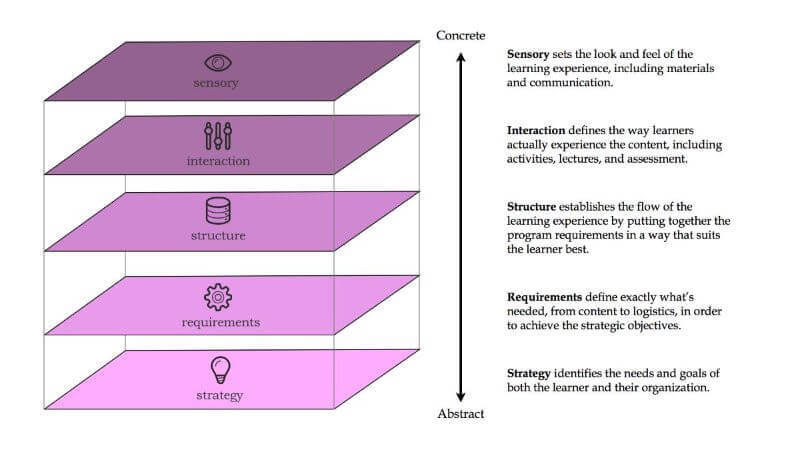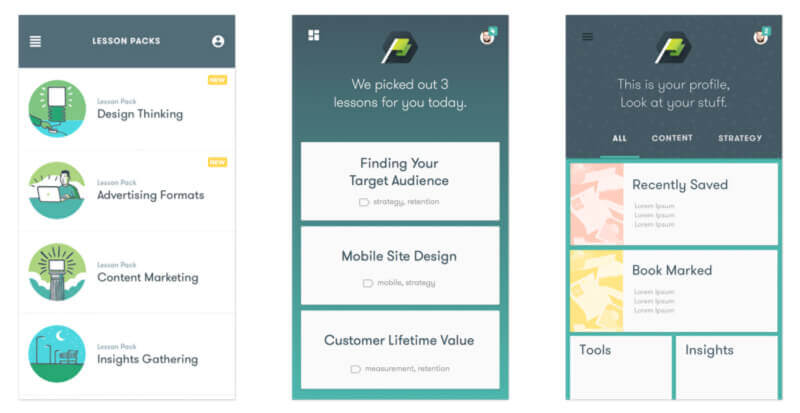Share
The emergence of UX in the digital world is beginning to have an effect on the e-learning industry. And one of the most important roles in this discipline, the Instructional Designer, has an open invitation to evolve and become a Learning Experiences Designer.
The groundwork for this new role in UX is defined in this post by Andre Plaut …, and it draws a parallel between the UX framework by Jesse James Garret and the one that should be followed when designing a learning experience.

Its scope of work requires considerable extension, as it needs to consider many more factors than the instructional designer needs when creating content. But it also seems like an inevitable step ahead. Learning is complex and is an experience that, when designed, should seek greater impact on the student: to learn more, learn better and enjoy learning.
Being able to go from being an Instructional Designer (design instructions for people to learn) to be called Learning Experience Designer (design experiences for learning) should be enough motivation for any professional to make the leap.
That said, it’s obviously not a question of just changing your profile on LinkedIn, it’s about getting down to work seriously if we really want the emergence of this figure to be worthwhile.
If you are currently working as an Instructional Designer and want a couple of clues about what what it means to become a LXD (Learning Experience Designer) take a look at this post by Sandra Nam (Team Lead / Product Lead @ Google). She explains the process of creating the app First, a brilliant example of an adult oriented learning product: Google’s App First.

As we saw earlier, Learning Experience Design has its starting point in the framework explained in the book The Elements of User Experience: UserCentered Design for the Web by Jesse James Garret (a must read if you are interested in the subject), published in 2002. But by that time, User eXperience had already traveled a previous path: User-Centered Design. And on top of that, since 2002 this vision has evolved dramatically to the present. All this leads to think that we need to revise the role UX could play in education.
Putting the starting point in User-Centered Design.
User-Centered design focuses on the person who will be using our product or service(platform, app, website …) when making decisions in the design process. By design, I don’t mean this or that or any other typeface or that color; I mean the design of features, navigation flows and content: The basis of our product.
If we extend the concept of User-Centered Design to nondigital interactions, then we ́ll be talking about Human-Centered Design (focused on human design); after all, whether we accept it or not, the point where human beings and our brand converge goes much beyond the purely digital.
So, if we keep in mind the idea of interaction outside the digital world, and take a step further in the integration of these methodologies in learning, what will emerge clearly and naturally is the Learner-Centered Design (LCD).
What if the learner is the center of our decisions?
Then, it seems clear that the application of this methodology cannot be reduced only to the field of elearning, but must be broadened, and brought down to earth; seeking positive ways to impact how teachers face the creation and development of classes for their learners.
If you are one of those teachers who are well regarded by students, whose classes succeed because you are able to keep your students engaged, and your reputation as a good teacher is also widespread among your peers, you might be, unknowingly, applying UX methodology in your classes. You are the creators of the Learner-Centered Design.
In the next post I’ll reveal the secret of your success and the ingredients of a recipe that you may not even be able to explain, but because yours is pure talent; but I’m sure that when you see the written ingredients you will feel fully identified.
Share


One Response